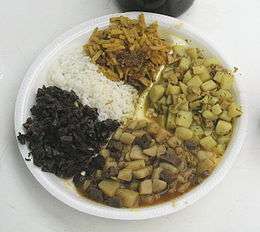Cow lung

Cow lung is used in various cuisines and as a source for pulmonary surfactants. In Peru it is known as bofe. In Southeast Asia, Nasi kuning can be made with cow lung. Paru goreng is fried cow lung Padang food. It is a type of offal. In Indonesia, cow's lung is called paru and is eaten coated with spices (turmeric and coriander) and fried as a snack or side dish. In Malaysian cuisine, cow or goat lung, called paru, coated in turmeric and fried is often served as a side dish to rice, especially in the ever popular nasi lemak.
Animal derived surfactants include Beractants Alveofact extracted from cow lung lavage fluid and Survanta extracted from minced cow lung with additional DPPC, palmitic acid and tripalmitin.
Defibrotide is a deoxyribonucleic acid derivative (single-stranded) derived from cow lung.